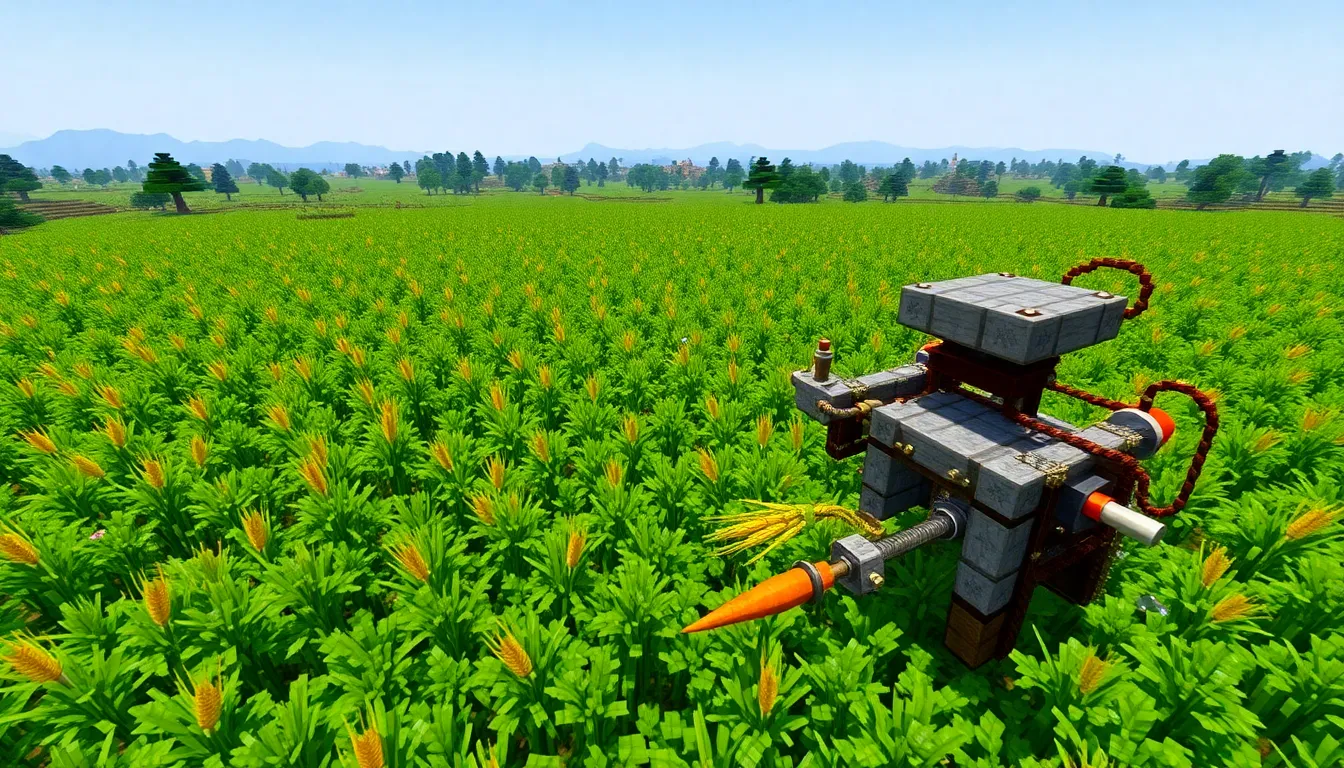Are you tired of spending countless hours in Minecraft manually farming? Let’s face it, who has time to till the soil when you could be battling creepers or building towering castles? Thankfully, automatic farms are here to rescue you from the mundane grinds of traditional agriculture. With a touch of redstone magic and some clever designs, automatic farms can transform your Minecraft experience from tedious to thrilling. Get ready to reap the rewards of automation and investigate into the enchanting world of automatic farming.
minecraft automatic farms

Automatic farms in Minecraft are designed to gather resources without requiring constant player intervention. Players set up these contraptions using various materials, often involving redstone, pistons, and water, to continuously harvest crops, breed animals, or mine resources. Once established, these farms operate autonomously, allowing players to focus on exploration, building, or indulging in other aspects of their Minecraft adventure. Imagine a serene patch of farmland, crops swaying in the breeze, while you chill out elsewhere. Sounds perfect, right? Well, that’s the magic of automatic farms.
Benefits of Using Automatic Farms
The advantages of using automatic farms extend way beyond simply saving time.
- Resource Efficiency: Automated systems can yield far more resources per hour than traditional farming methods. With a single setup, players can harvest stacks of goods with minimal effort.
- Unleashed Creativity: Players have more time to unleash their creativity by designing epic structures or exploring new biomes instead of grinding for food.
- Consistent Production: Automatic farms ensure a consistent production cycle. Forget about seasonal limitations: these farms can operate year-round.
- Less Dependency on Manual Labor: Say goodbye to the endless cycle of planting and harvesting. With automation in place, players can kick back and watch their crops do the hard work.
In short, automatic farms revolutionize gameplay by making resource management infinitely more enjoyable.
Types of Automatic Farms
In the world of Minecraft, automatic farms can be categorized into three main types, each serving unique needs:
1. Crop Farms
These incorporate various crops including wheat, potatoes, carrots, and even more exotic items like nether wart. They use water and pistons to automatically harvest and replant crops, making your agricultural output flourish.
2. Animal Farms
Designed to breed animals such as cows, pigs, and chickens, these farms make use of feeding mechanisms and breeding systems to create a sustainable livestock population. Players can enjoy a steady supply of meat, leather, and other animal products.
3. Resource Farms
These farms focus on extracting valuable resources like wood from trees or ores from the ground. Through creative designs involving bone meal and observer blocks, resource farms help players stock up without manual effort.
Understanding the different types of automatic farms can guide players in tailoring their farming strategy to meet specific resource needs.
Basic Components of an Automatic Farm
Creating an automatic farm requires a few essential components:
- Water: This is key for irrigation and can help in the transportation of harvested items.
- Pistons: These are used to push blocks, making them essential for harvesting crops.
- Hoppers: Hoppers are perfect for collecting items dropped by your automated systems.
- Redstone: Often considered the wiring of Minecraft, redstone is crucial for connecting different components and enabling automation.
- Observers: These blocks detect changes and are used to automate the operation of pistons and other mechanical parts.
Mastering these components is the first step to crafting your very own automated masterpiece.
How to Build Your First Automatic Farm
Building your first automatic farm can be an exhilarating process. Here’s a step-by-step guide to get you started:
- Choose Your Farm Type: Decide whether you want a crop, animal, or resource farm, as this will affect your design.
- Select the Site: Find an appropriate location, preferably close to water and other resources, yet far from any potential disturbances.
- Gather Materials: Stock up on pistons, redstone, hoppers, and any other resources needed for your chosen farm type.
- Construct the Framework: Build the basic structure based on your desired design. This should include areas for planting, water channels, and mechanisms for automated harvesting.
- Integrate Redstone: Connect the various components using redstone. This element is the lifeblood of your farm, so take your time to ensure everything is linked correctly.
- Test It Out: Once your farm is built, test it. Monitoring the system for a while will help identify any issues before full-scale operation.
Congratulations, you’ve just created your first automatic farm.
Tips for Optimizing Automatic Farms
Optimization is crucial if you want your automatic farm to reach its full potential. Here are some top tips:
- Efficient spacing: Ensure crops and resources are planted with enough space to maximize growth.
- Ideal lighting: Proper light levels can significantly enhance crop yield. Use torches or glowstone strategically to keep your crops illuminated.
- Regular maintenance: Occasionally check on your systems to replace worn-out materials, like pistons or hoppers.
- Experiment with upgrades: Redstone is a flexible tool: try incorporating more advanced mechanisms to create a more efficient system.
By applying these tips, players can take their farming endeavors to new heights.
Troubleshooting Common Issues
Even well-designed automatic farms can run into hiccups. Here are some common issues and their solutions:
- Clogged Hoppers: If items aren’t being collected, check the hopper for blockages. Regular maintenance can prevent this problem.
- Piston Failures: Ensure that pistons are adequately powered. Redstone signals can weaken, so consider using repeaters to maintain strength.
- Water Issues: Make sure the water flow is not interrupted. Water should reach every crop or resource extract area to ensure proper function.
- Harvester Not Operating: Verify that observers are correctly placed. Sometimes, improper orientation can hinder automated actions.
With these troubleshooting tips, any player can quickly resolve common frustrations.


More Stories
Minecraft Candy: A Sweet Guide to Treats in the Game
How To Make A Regeneration Potion In Minecraft
Minecraft Factions: A Comprehensive Guide